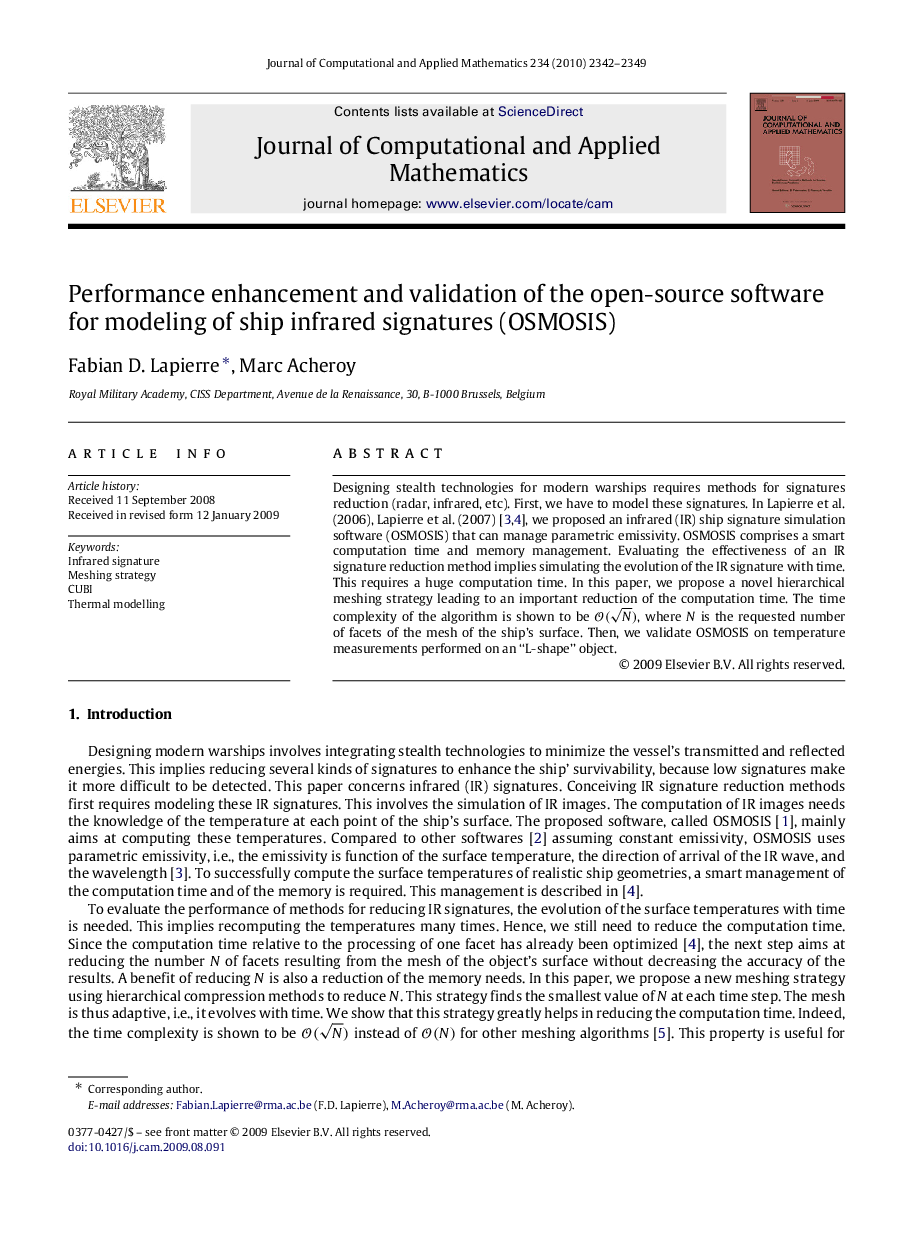| Article ID | Journal | Published Year | Pages | File Type |
|---|---|---|---|---|
| 4640428 | Journal of Computational and Applied Mathematics | 2010 | 8 Pages |
Designing stealth technologies for modern warships requires methods for signatures reduction (radar, infrared, etc). First, we have to model these signatures. In Lapierre et al. (2006), Lapierre et al. (2007) [3] and [4], we proposed an infrared (IR) ship signature simulation software (OSMOSIS) that can manage parametric emissivity. OSMOSIS comprises a smart computation time and memory management. Evaluating the effectiveness of an IR signature reduction method implies simulating the evolution of the IR signature with time. This requires a huge computation time. In this paper, we propose a novel hierarchical meshing strategy leading to an important reduction of the computation time. The time complexity of the algorithm is shown to be O(N), where NN is the requested number of facets of the mesh of the ship’s surface. Then, we validate OSMOSIS on temperature measurements performed on an “L-shape” object.
